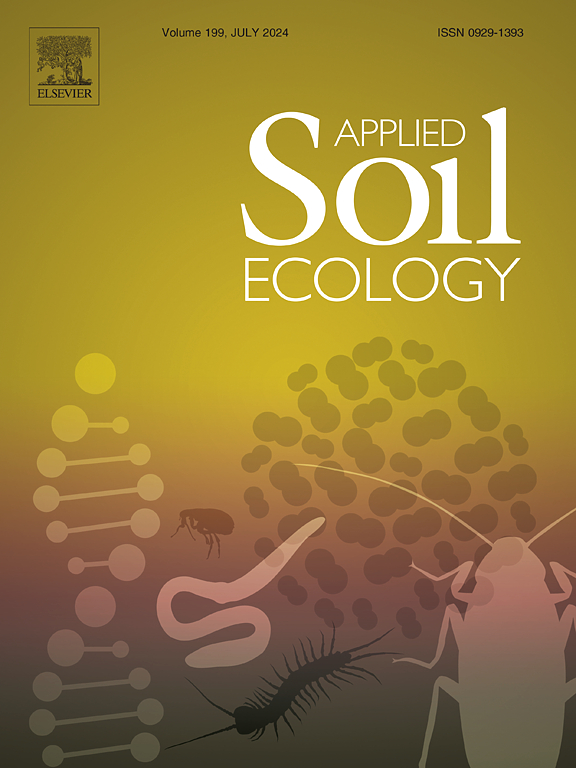Organic management promotes nitrogen transformation in tea plantations soil: A case study from southwestern China
IF 4.8
2区 农林科学
Q1 SOIL SCIENCE
引用次数: 0
Abstract
The insufficient soil nitrogen supply and its transformation mechanisms, along with the impact of organic management at various growth stages of tea plants on soil nitrogen cycling in organic tea plantations, are poorly understood. To elucidate the nitrogen transformation mechanism and enhance agronomic practices in organic tea plantations, we investigated the soil nitrogen-cycling microbiome and nitrogen cycling abundance (reflecting nitrogen transformation potential) in tea plantations aged 11, 16, and 24 years under both organic management (OM) and conventional management (CM). Specifically, OM11, OM16, and OM24 represent plantations that transitioned to organic management during the cultivating period (seedling stage), at 2 years old (juvenile stage), and at 10 years old (adult stage), respectively. The results demonstrated that the nitrogen transformation potential was enhanced by 28 % and 37 % in OM16 and OM24 compared to CM, respectively. In OM16, the abundance of nirD in dissimilatory nitrate reduction (DNRD) reduced by 53 %, while genes involved in assimilatory nitrate reduction (ANRD), DNRD, denitrification, nitrate assimilation, methylaspartate cycle, and nitrogen fixation had an increase of 24 %–2900 % compared to CM16. Meanwhile, in OM24, genes involved in DNRD, denitrification, nitrate assimilation, nitrification, and methylaspartate cycle exhibited a 50 %–1200 % increase over CM24. Microorganisms involved in soil nitrogen cycling were similar between OM and CM, while their abundance varied significantly. The pH and Betaproteobacteria were the key factors influencing nitrogen transformation. In summary, these results underscored the positive effect of long-term organic management on the nitrogen transformation in the tea plantation soil, and it exhibited a significant promoting effect when organic management was initiated at 2 years old (juvenile stage) and 10 years old (adult stage).

求助全文
约1分钟内获得全文
求助全文
来源期刊

Applied Soil Ecology
农林科学-土壤科学
CiteScore
9.70
自引率
4.20%
发文量
363
审稿时长
5.3 months
期刊介绍:
Applied Soil Ecology addresses the role of soil organisms and their interactions in relation to: sustainability and productivity, nutrient cycling and other soil processes, the maintenance of soil functions, the impact of human activities on soil ecosystems and bio(techno)logical control of soil-inhabiting pests, diseases and weeds.
 求助内容:
求助内容: 应助结果提醒方式:
应助结果提醒方式:


